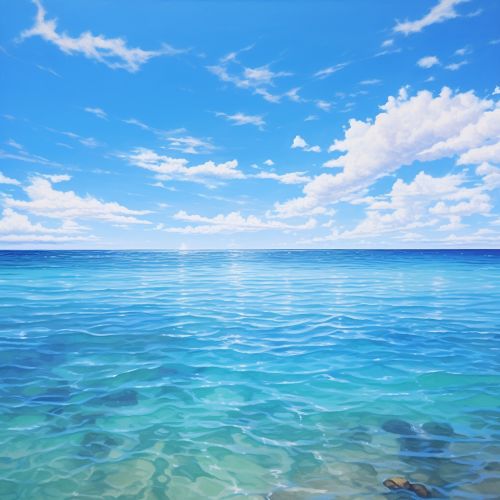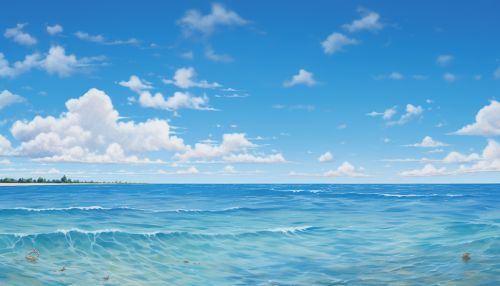Ocean
Introduction
The Ocean is a vast body of saline water that covers approximately 71% of the Earth's surface. It is divided into five major oceans, namely the Atlantic Ocean, the Pacific Ocean, the Indian Ocean, the Southern Ocean, and the Arctic Ocean. These oceans contain 97% of the Earth's water and represent 99% of the living space on the planet by volume.


Formation of Oceans
The formation of the oceans is closely linked to the formation of the Earth itself, around 4.5 billion years ago. The process began with the condensation of water vapor in the Earth's early atmosphere. As the Earth cooled, this water vapor fell as precipitation and collected in low-lying areas, forming the first oceans. The composition of these early oceans was influenced by various factors, including volcanic activity, weathering of rocks, and the presence of life.
Oceanic Features
The ocean is not a uniform body of water. It has a complex topography, with various physical features such as trenches, seamounts, mid-ocean ridges, and plateaus. The deepest part of the ocean is the Mariana Trench in the western Pacific, which reaches a depth of approximately 36,000 feet (11,000 meters).
Oceanic Zones
The ocean is divided into different zones based on depth and distance from the shore. These include the intertidal zone, the neritic zone, the oceanic zone, and the benthic zone. Each of these zones has distinct physical and biological characteristics.
Oceanic Currents
Ocean currents are continuous, directed movements of seawater. They are generated by a complex system of forces that include wind, temperature, salinity, and the rotation of the Earth. Ocean currents play a crucial role in regulating the Earth's climate by transferring heat from the equator towards the poles.
Marine Life
The ocean is home to a diverse range of marine life, from microscopic organisms like plankton to the largest animal on Earth, the Blue whale. The distribution of marine life is influenced by factors such as light availability, temperature, salinity, and nutrient availability.
Human Interaction with the Ocean
Humans have interacted with the ocean for thousands of years, using it for transportation, food, and recreation. However, human activities such as overfishing, pollution, and climate change are causing significant harm to the ocean and its inhabitants.
Conservation Efforts
Efforts are being made to conserve the ocean and its biodiversity. These include the establishment of marine protected areas, regulations on fishing, and initiatives to reduce pollution. However, more needs to be done to ensure the health and sustainability of our oceans.
